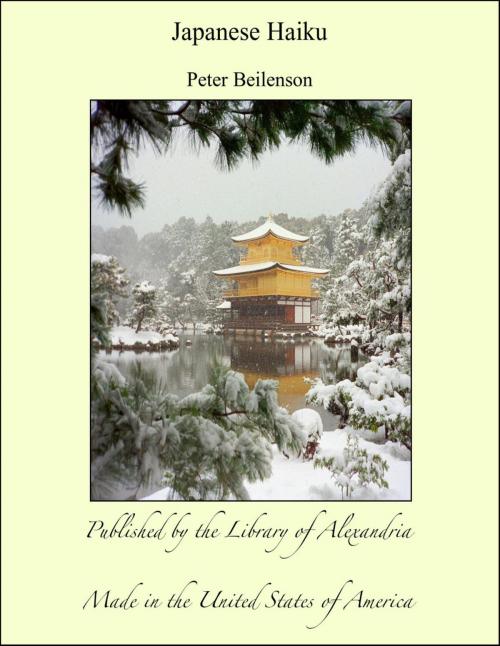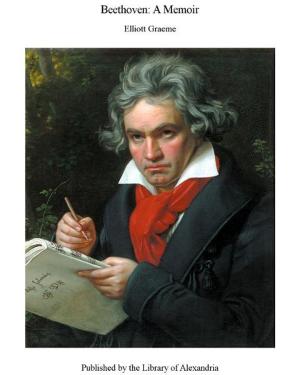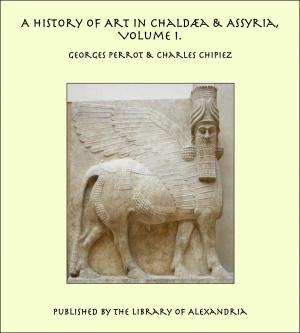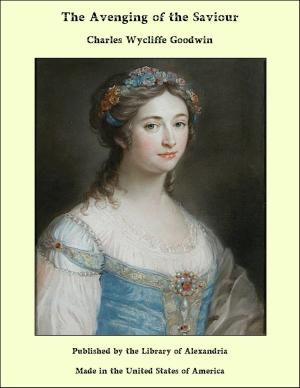| Author: | Peter Beilenson | ISBN: | 9781465576798 |
| Publisher: | Library of Alexandria | Publication: | March 8, 2015 |
| Imprint: | Language: | English |
| Author: | Peter Beilenson |
| ISBN: | 9781465576798 |
| Publisher: | Library of Alexandria |
| Publication: | March 8, 2015 |
| Imprint: | |
| Language: | English |
THE hokku or more properly haiku is a tiny verse-form in which Japanese poets have been working for hundreds of years. Originally it was the first part of the tanka, a five-line poem, often written by two people as a literary game: one writing three lines, the other, two lines capping them. But the hokku, or three-line starting verse, became popular as a separate form. As such it is properly called haiku, and retains an incredible popularity among all classes of Japanese. There are only seventeen syllables in the haiku, the first and third lines contain five, the second line seven. There is almost always in it the name of the season, or a key word giving the season by inference. (This is a short-cut, costing the poet only one or two syllables, whereby the reader can immediately comprehend the weather, the foliage, the bird and insect-life?and the emotions traditional to the season: factors which almost always are important in the poem.) But there is also, in a good haiku, more than a mere statement of feeling or a picture of nature: there is an implied identity between two seemingly different things. The greatest of haiku-writers, and the poet who crystallized the style, was Basho (1644-1694). In his later years he was a student of Zen Buddhism, and his later poems, which are his best, express the rapturous awareness in that mystical philosophy of the identity of life in all its forms. With this awareness, Basho immersed himself in even the tiniest things, and with religious fervor and sure craftsmanship converted them into poetry. He was ardently loved by his followers, and by later poets, and his Zen philosophy has thus been perpetuated in later haiku. It is, indeed, a key to the completest appreciation of most haiku. Following Basho in time and fame was Buson (1715-1783)?a little more sophisticated and detached than his predecessor, and an equally exquisite craftsman. The third great haiku poet was unhappy Issa (1763-1827), a continual butt of fate. He is less poetic but more lovable than Basho and Buson. His tender, witty haiku about his dead children, his bitter poverty, his little insect friends, endear him to every reader. Other masters are of course represented here too.
THE hokku or more properly haiku is a tiny verse-form in which Japanese poets have been working for hundreds of years. Originally it was the first part of the tanka, a five-line poem, often written by two people as a literary game: one writing three lines, the other, two lines capping them. But the hokku, or three-line starting verse, became popular as a separate form. As such it is properly called haiku, and retains an incredible popularity among all classes of Japanese. There are only seventeen syllables in the haiku, the first and third lines contain five, the second line seven. There is almost always in it the name of the season, or a key word giving the season by inference. (This is a short-cut, costing the poet only one or two syllables, whereby the reader can immediately comprehend the weather, the foliage, the bird and insect-life?and the emotions traditional to the season: factors which almost always are important in the poem.) But there is also, in a good haiku, more than a mere statement of feeling or a picture of nature: there is an implied identity between two seemingly different things. The greatest of haiku-writers, and the poet who crystallized the style, was Basho (1644-1694). In his later years he was a student of Zen Buddhism, and his later poems, which are his best, express the rapturous awareness in that mystical philosophy of the identity of life in all its forms. With this awareness, Basho immersed himself in even the tiniest things, and with religious fervor and sure craftsmanship converted them into poetry. He was ardently loved by his followers, and by later poets, and his Zen philosophy has thus been perpetuated in later haiku. It is, indeed, a key to the completest appreciation of most haiku. Following Basho in time and fame was Buson (1715-1783)?a little more sophisticated and detached than his predecessor, and an equally exquisite craftsman. The third great haiku poet was unhappy Issa (1763-1827), a continual butt of fate. He is less poetic but more lovable than Basho and Buson. His tender, witty haiku about his dead children, his bitter poverty, his little insect friends, endear him to every reader. Other masters are of course represented here too.















